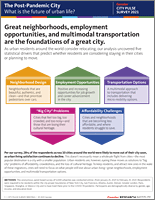As an update to our previous Gensler City Pulse, we conducted a survey of 10 cities in February 2021 to see how urban residents were doing as the world approached one year of living with COVID-19 and mass vaccinations began in many countries.
Twenty-eight percent of residents surveyed across 10 cities around the world are likely to move out of their city soon, as urban living satisfaction continues to decline. This doesn't necessarily mean a wholesale flight from cities — the most popular destination for relocation is a city with a smaller population. Urban residents are, however, eyeing these moves as solutions to “big city” problems of affordability, crowdedness, and the loss of cultural heritage. To retain residents and attract new ones in the wake of these migrations, cities will need to focus on what people still love about urban living — great neighborhoods, employment opportunities, and multimodal transportation options.
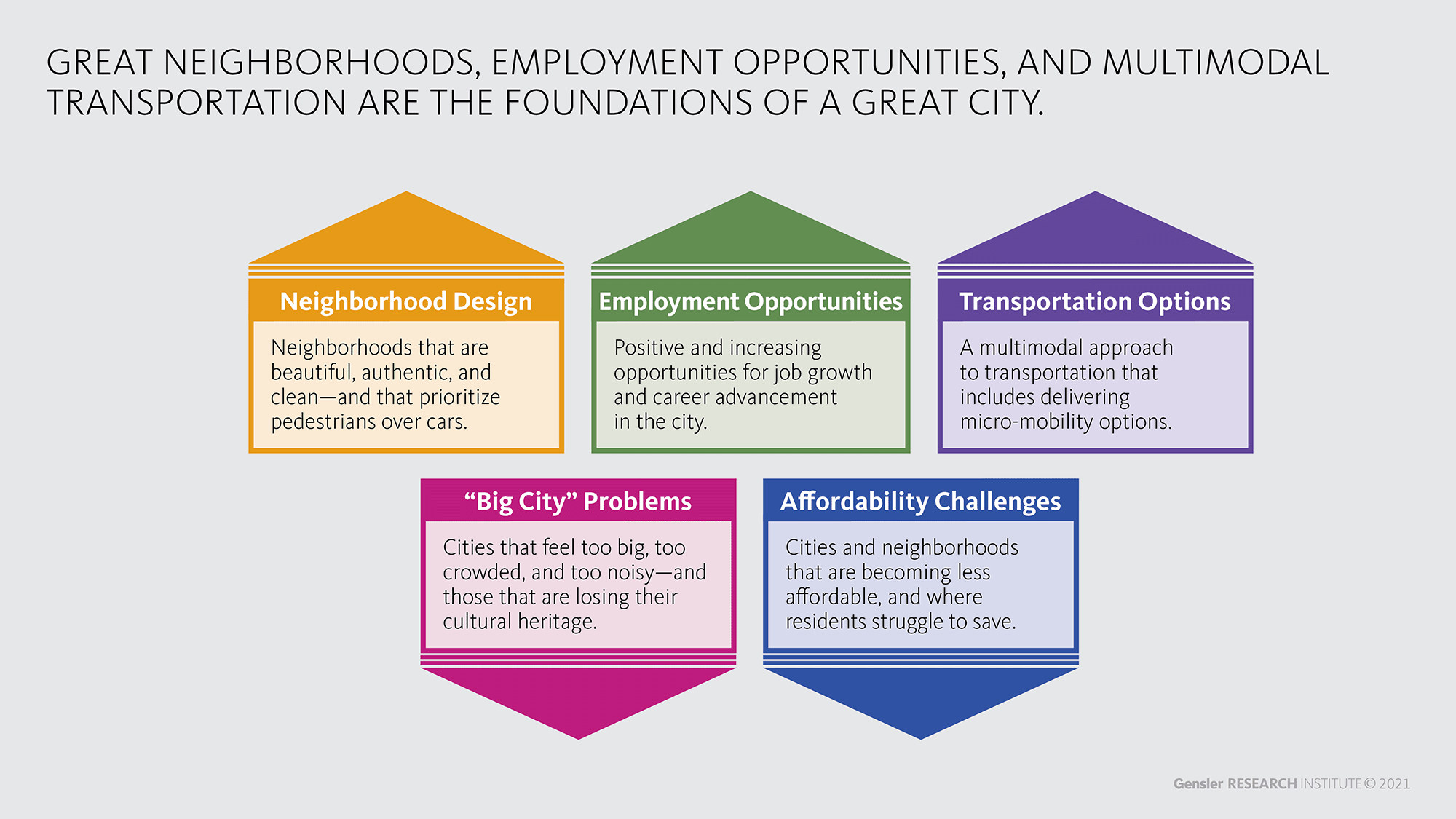
What makes or breaks a city?
Our analyses identified five factors — the positive and negative influences — that predict people’s propensity to stay in or leave their current city. These factors can provide a blueprint for what cities can do to retain residents and attract new ones.
The three factors that motivated people to stay are great neighborhood design, employment opportunities, and transportation options. People who feel that their neighborhoods are beautiful, authentic, safe, clean, and pedestrian-friendly are more likely to want to stay in their current cities. When it came to employment opportunities, we found that people need both job options and opportunities for career advancement. Finally, cities should take a multimodal approach to foster a seamless mass transit experience — one that not only accommodates cars but also integrates micro-mobility options.
The factors that drive people to leave are “big city” problems and affordability. People who feel that their cities are too big, too noisy, too crowded, have too much traffic, and are losing their cultural heritage are more likely to consider relocating. Additionally, people who are living paycheck to paycheck, who feel that their neighborhoods are becoming increasingly unaffordable, and who feel the anxiety from these stressors, are much more likely to consider leaving.
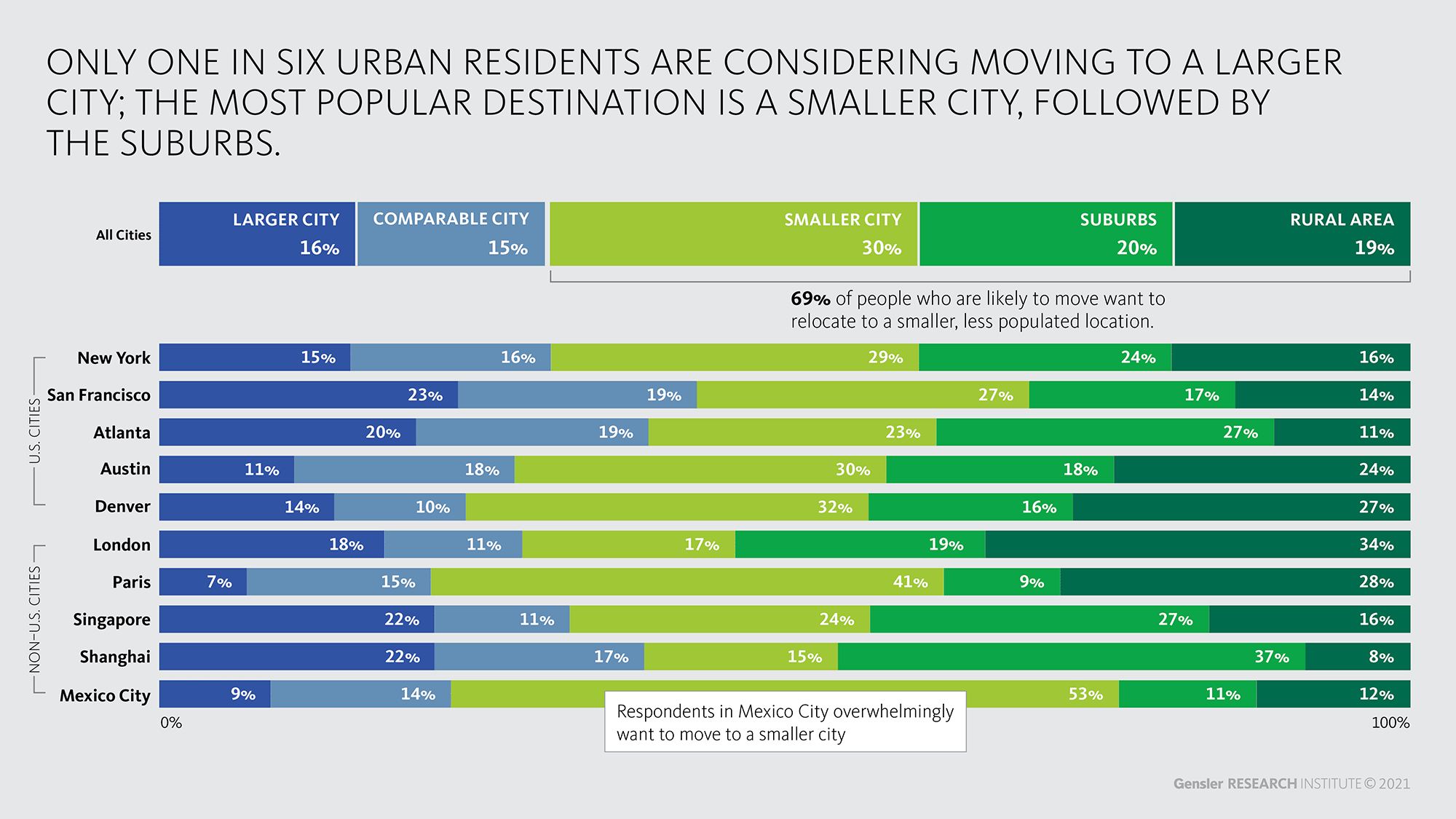
The smaller city experience could possibly be the future of urban life.
Regardless of the size of their current city, well over two-thirds of survey respondents who were considering moving say they want to relocate to a smaller, less populated location — ranging from smaller cities to the suburbs to rural areas. For urban residents who are thinking about relocating, the most popular destination is a smaller city, according to the City Pulse Survey findings.
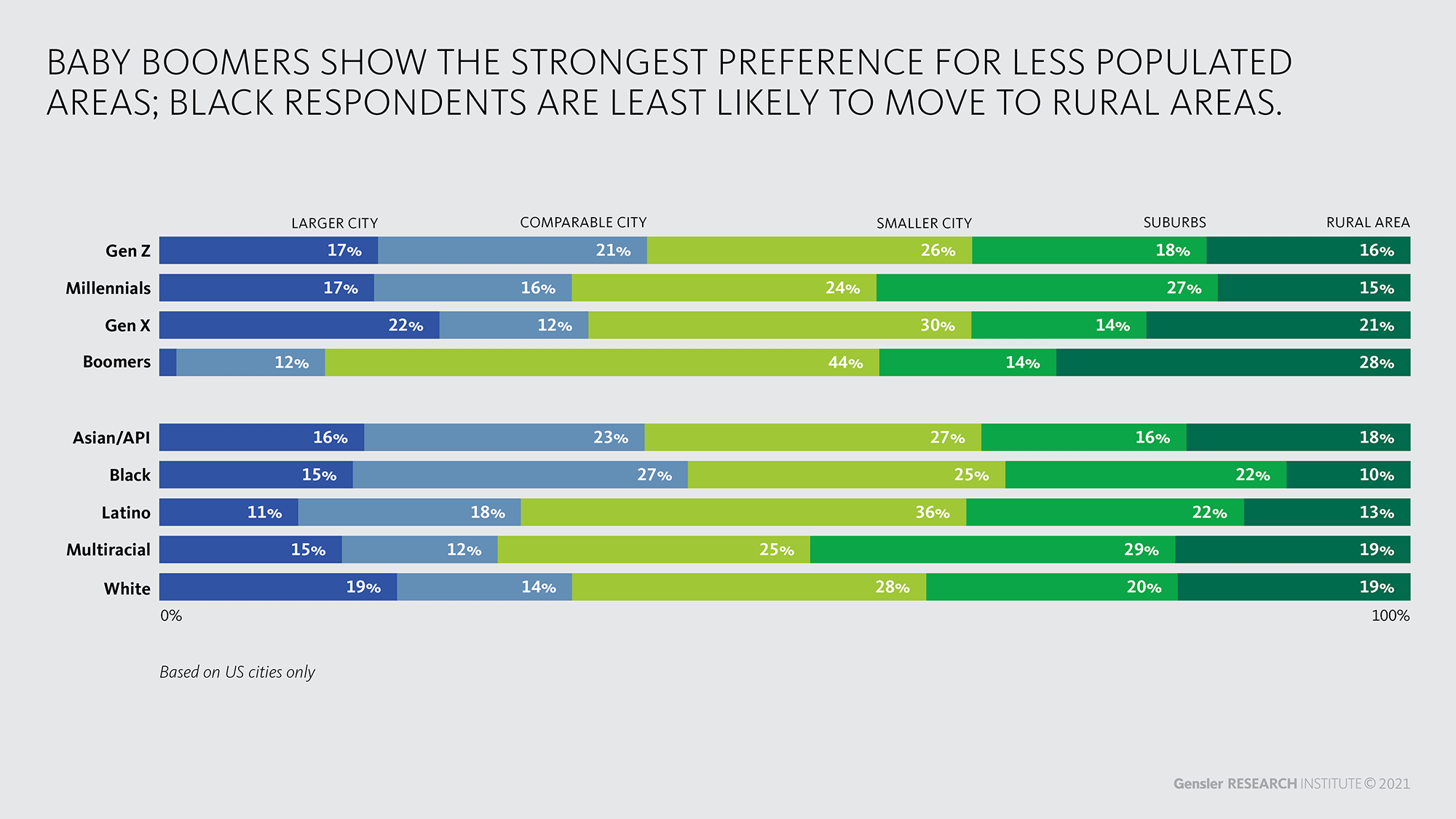
The majority of residents around the world want to move to a smaller city, though there is some variation by generation and race.
Millennials, the age group most likely to move, show the strongest preference for the suburbs. In U.S. cities, Latino and multiracial respondents show the strongest desire to move to areas with smaller populations — a figure that could be influenced by the fact that Latinos have faced disproportionate health and economic impacts as a result of the pandemic.
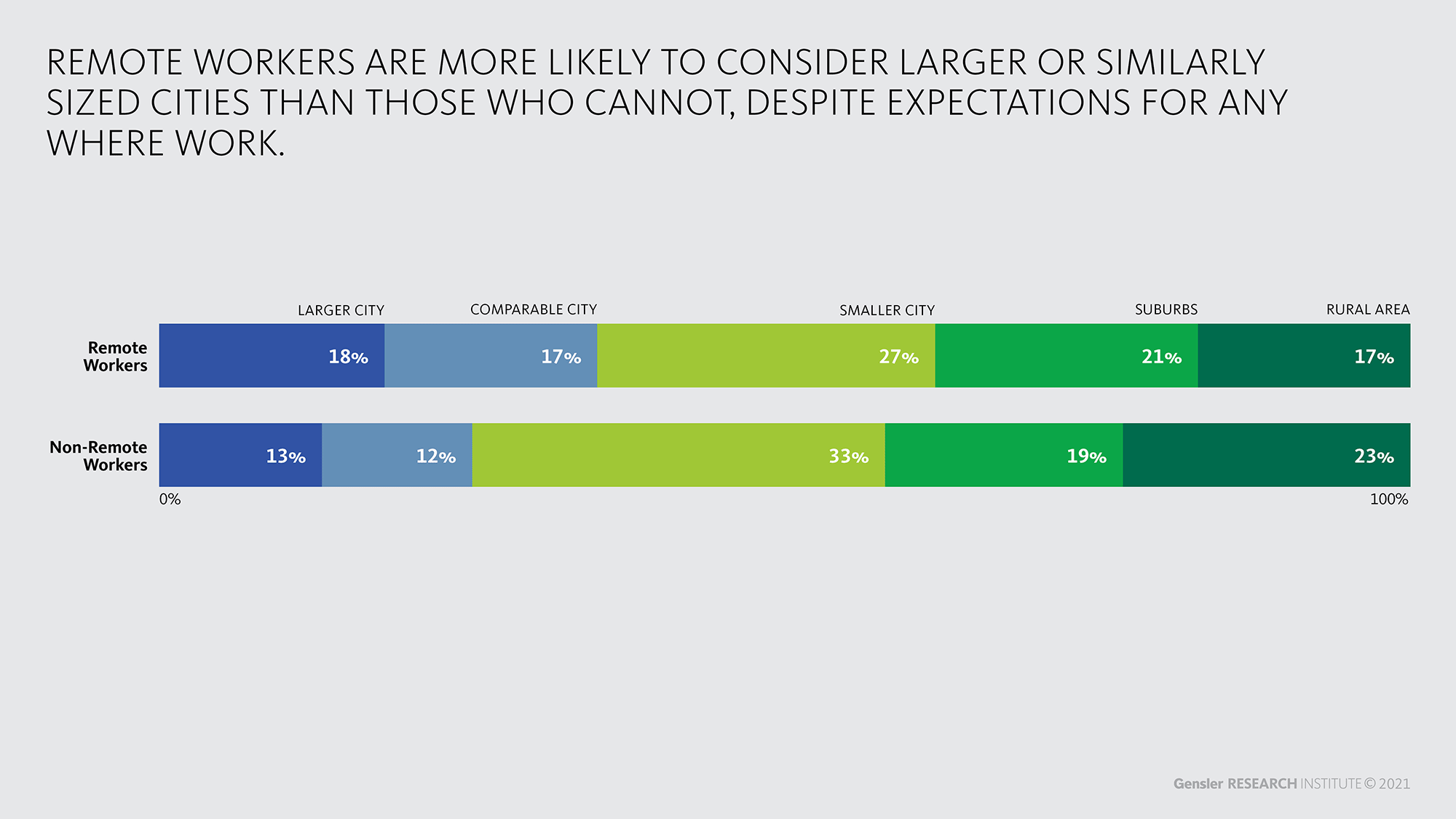
Remote work does not signal the end of cities or central business districts.
Workers with the ability to work remotely are more likely to consider larger or similarly-sized cities than those who cannot, despite expectations for anywhere work. Overall, 50% of surveyed Millennials who had the ability to work remotely considered relocating away from their current city. In the five U.S. cities in our study, white respondents made up 66% of those with the ability to work remotely.
City Pulse Survey 2021 Methodology
This anonymous, panel-based survey of 5,000 urbanites was conducted online — from January 25 to February 25, 2021. Respondents were required to be residents within the city proper boundaries of New York City, San Francisco, Atlanta, Austin, Denver, Greater London, Paris, Singapore, Shanghai, or Mexico City and to have lived there prior to the COVID-19 pandemic. Participants are demographically diverse by gender, age, income, and education level.
Download the full Gensler City Pulse Survey 2021 Report to explore how cities can deliver on the factors that attract and retain urban residents. Gensler’s data provides key insights into how urban centers can address “big city” problems and deliver positive experiences to city dwellers.
